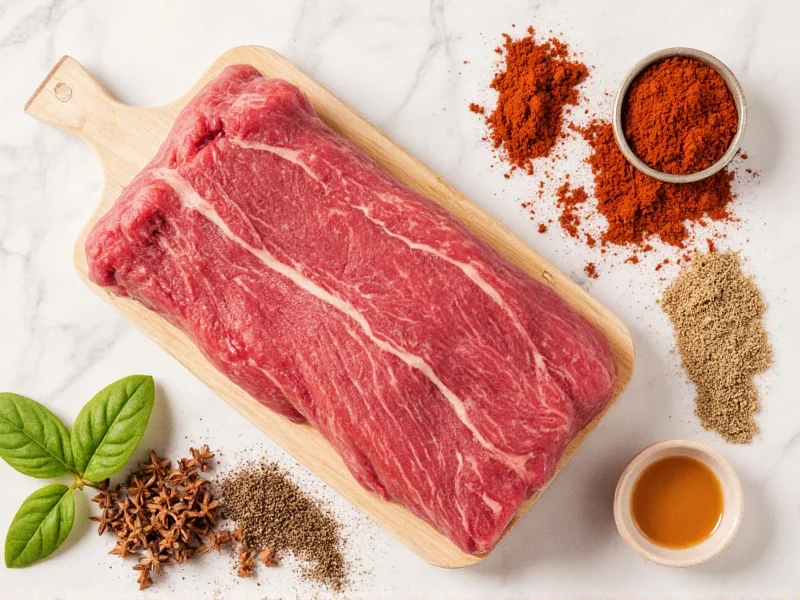Beef stew represents culinary alchemy—transforming humble ingredients into something extraordinary through slow cooking. While quality meat and proper technique matter, the spice selection makes or breaks this classic comfort food. Many home cooks underestimate how specific spices interact with beef's rich collagen and fat, creating either harmony or discord in the final dish.
Why Spice Selection Matters for Beef Stew
Unlike quick-cooking dishes where spices remain distinct, beef stew's long simmering time allows flavors to meld and transform. The right spices don't just add flavor—they catalyze chemical reactions that enhance meat tenderness and deepen umami. Understanding best spices for hearty beef stew requires knowing how each component interacts with collagen breakdown and Maillard reactions occurring during cooking.
Core Spice Profiles: Function and Application
Bay Leaves: The Flavor Foundation
Often overlooked but indispensable, bay leaves provide subtle complexity through eugenol and myrcene compounds. These terpenes mellow during long cooking, creating a background note that ties other spices together. Use 1-2 dried leaves per pound of beef, added at the beginning of cooking. Remove before serving—extended simmering makes them bitter. Fresh bay leaves work but require adjustment (use 3-4) as their flavor compounds differ from dried.
Thyme: Earthy Balance
Thyme's thymol and carvacrol create earthy notes that complement beef's richness without overwhelming. French thyme (common in grocery stores) works best for stew. Add 1-2 teaspoons of dried thyme or 3-4 sprigs fresh at the start of cooking. The stems contain concentrated flavor—toss them in the pot and remove before serving. For authentic beef stew spice blend, combine thyme with a pinch of marjoram to enhance its floral notes.
Black Pepper: Controlled Heat
Freshly cracked black pepper provides piperine that stimulates saliva production, enhancing perceived richness. Pre-ground pepper loses volatile compounds—always use whole peppercorns cracked just before adding. Add in two stages: half at searing (creates crust complexity) and half during simmering. For beef stew spices for deep flavor, use Tellicherry peppercorns which have higher oil content.
Paprika: Color and Sweet Depth
Choose between sweet Hungarian (for color and mild sweetness) or smoked Spanish (for depth). Avoid hot varieties which overpower. Bloom 1-2 tablespoons in oil after searing meat but before adding liquid—this activates capsaicinoids and prevents bitterness. This technique creates the best spice combination for beef stew by developing complex pyrazines that mimic roasted flavors.
| Essential Spice | Quantity per 2 lbs Beef | Critical Timing | Chemical Contributor |
|---|---|---|---|
| Bay Leaves | 1-2 dried | Beginning of simmer | Eugenol, Myrcene |
| Thyme | 1-2 tsp dried or 3-4 sprigs | Beginning of simmer | Thymol, Carvacrol |
| Black Pepper | 1 tbsp cracked | Half at sear, half at simmer | Piperine |
| Paprika | 1-2 tbsp | After searing, before liquid | Capsaicinoids |
| Garlic | 3-4 cloves | Last 30 minutes | Allicin |
Advanced Flavor Layering Techniques
Professional chefs use spice timing for beef stew to maximize flavor development. The sequence matters as much as the ingredients:
- Dry spices with meat drippings: After searing beef, add paprika and tomato paste to the fond. The high heat creates new flavor compounds through the Maillard reaction
- Herbs early, aromatics late: Woody herbs (thyme, rosemary) go in at the beginning while delicate aromatics (garlic, parsley) add in the last 30 minutes
- Acid balance at the end: A splash of red wine vinegar or Worcestershire sauce right before serving brightens deep flavors
Regional Variations and When to Use Them
Understanding traditional spices in beef stew recipes helps you choose appropriate variations:
- French Bourguignon: Emphasizes thyme and bay with pearl onions and mushrooms. Omit paprika which isn't traditional
- American Midwest: Includes Worcestershire sauce and a touch of brown sugar for balance. Paprika provides color
- German Eintopf: Uses caraway seeds and juniper berries alongside standard spices. Add 1 tsp caraway with thyme
- Modern Interpretation: For beef stew spices for special occasions, add a single star anise during simmering—it enhances beef's natural sweetness without being detectable
Troubleshooting Common Spice Mistakes
Even with the best spices for beef stew, errors happen. Here's how to fix them:
- Overpowering spice: Add potato chunks—they absorb excess seasoning. Remove after 20 minutes
- Bitterness: Caused by burnt spices or overcooked bay leaves. Add 1 tsp honey and a splash of cream
- Flat flavor: Missing acid balance. Stir in 2 tbsp red wine vinegar off-heat
- Weak spice presence: Bloom spices in fat before adding liquid next time
Spice Freshness: The Hidden Factor
Stale spices undermine even perfect recipes. Test your spices:
- Crush test: Rub between fingers—fresh spices release strong aroma
- Color test: Paprika should be vibrant red, not faded orange
- Water test: Drop in water—fresh spices create immediate color diffusion
Replace ground spices every 6 months and whole spices yearly. Store in airtight containers away from light. For optimal spices for beef stew, buy small quantities from stores with high turnover.











 浙公网安备
33010002000092号
浙公网安备
33010002000092号 浙B2-20120091-4
浙B2-20120091-4